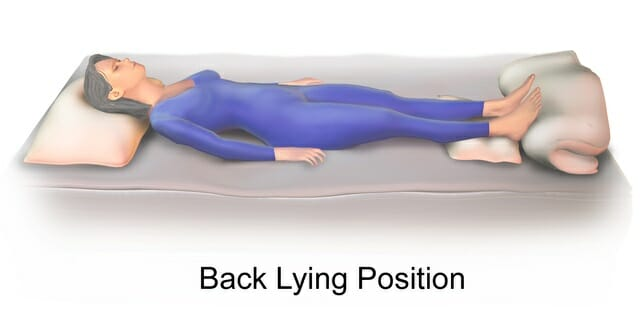Key Takeaways
- Embalming is the process of preserving a body after someone dies.
- It delays the natural effects of death on the body.
- Special liquids are put into the body to keep it from decomposing quickly.
- Embalming allows the body to be viewed at a funeral service.
- The embalming process involves cleaning, removing blood, injecting chemicals, and positioning the body.
Introduction
Have you ever wondered what happens to someone’s body after they die? Many bodies go through a process called embalming before burial or cremation. Embalming is done to temporarily preserve the body and restore its appearance.
This article will explain everything you need to know about embalming. You will learn the steps of how it is done. You will also learn why it is done and when it is needed. Embalming is an important part of funeral services for some families. Read on to find out all about this process!
What is Embalming?

Embalming is the process of preserving a dead body from decaying right away. Special embalming fluids are injected to keep the body from decomposing or rotting. This delays the natural breakdown that happens after death.
Embalming allows the body to be viewed by loved ones during funeral services. It restores the body’s appearance for a more natural look. With embalming, the body can be properly displayed days or even weeks after death.
Why is Embalming Done?
There are a few main reasons bodies are embalmed:
- For funeral viewings – Embalming prepares the body for friends and family to view during visitation or funeral services. It provides a peaceful memory picture.
- For sanitation – Embalming disinfects the body to kill bacteria or viruses. This prevents spread of disease.
- For transportation – A body may need to be shipped for an out-of-town burial. Embalming allows this.
- Personal preference – Some families choose embalming for cultural or religious reasons. Others simply prefer it.
While embalming is common, it is not legally required in most cases. Some types of burial, like immediate cremation, do not need embalming.
How Does the Embalming Process Work?
Embalming is done by trained professionals called embalmers. They carefully inject special fluids to preserve and restore the body. The full embalming process usually involves these key steps:

Cleaning the Body
First, the outside of the body is washed clean. This removes any dirt, blood, body fluids, or debris. The mouth, eyes, ears, and other areas are gently cleaned too.
Removing the Blood
Next, the blood is drained from the body through the veins. An embalming machine pumps out the blood and replaces it with fluid.
This is done by inserting tubes into a large artery while the blood drains through a nearby vein. The embalmer massages the limbs to help drain the blood back to the heart.
Injecting Chemicals
Once the blood is drained, the embalming fluid is injected into the body through the arteries. The fluid is usually a mix of formaldehyde and other chemicals.
It spreads throughout all the tissues to delay decay. This is how the body gets preserved.
Positioning the Body
Throughout the process, the embalmer will massage the limbs, flex the joints, and set facial features. This restores a natural, lifelike appearance.
The body is posed with the hands and arms gently arranged. The mouth is closed and the eyes positioned. The body is groomed and dressed as desired.
What Happens After Embalming?
After embalming, the body is placed in a casket or cremated if preferred. The viewing and funeral service can proceed once embalming is complete.
If burial is delayed, the body may be held in refrigeration to slow any additional decomposition. But embalming only preserves the body temporarily.
Over time, even with embalming, the body will still decompose. An embalmed body buried in a casket will take many years longer to decompose, but it will still happen eventually.
Frequently Asked Questions
How long does embalming preserve the body?
With embalming, the body can be preserved for about 10 days to 2 weeks. Refrigeration at the funeral home can extend this time. But embalming does not permanently stop decomposition.
Does embalming require surgery or stitches?
No. Only small incisions are made where tubes are inserted. These are hidden from view. The embalmer does not perform an autopsy or remove any organs.
What are embalming fluids made of?
Embalming fluid typically contains formaldehyde, methanol, and ethanol. These are used for disinfecting and preservation. Dyes may be added to restore natural skin tones. Perfumed chemicals mask odors.
Does embalming pose any health risks?
When done properly by trained professionals, embalming is considered very low risk. The chemicals are strictly managed and disposed of per regulations. Embalmers follow strict health and safety guidelines to minimize exposure.
Can a body still have an open casket funeral without embalming?
Yes, it is possible to have a viewing without embalming. But the body must be refrigerated, and the viewing scheduled very soon after death. Embalming allows more flexibility for service timing.
Conclusion
As you can see, embalming is an important part of the funeral process for many families. Special care is taken to temporarily preserve the body. This allows friends and loved ones to pay final respects.
While embalming is not required, it can be recommended so the deceased can be properly displayed. If you have more questions about embalming, be sure to discuss options with your funeral director
- What Is Tire Feathering?
- Can I Use Water As Slip Solution for Polygel?
- Why Is My Bearded Dragon Running Around Like Crazy?
- Who Practices Polygamy in the United States?
- Does Melanin Make Your Skin Thicker?
- Is There a Way to Undye Your Hair?
- Can You Eat Potatoes with Black Scurf?
- Why Do Prices Go Up Faster than Inflation?
- How to Trick Dave App?
- How To Turn Off Dome Light In Ford F250?
- How do I freeze my Snapchat score?
- How can I uninstall Diablo 3?